After a tough selection process we chose the Migro 100 (with Luminus CXM 32 gen.4) growlight to be the first to have the honour step in to the ring with our Rubol Josephine 135V V2 (with Citizen CLU058-1825C4 gen.6). We have high expectations for the Migro 100 on paper both growlights are very evenly matched. The prices for both these growlights can be seen below.
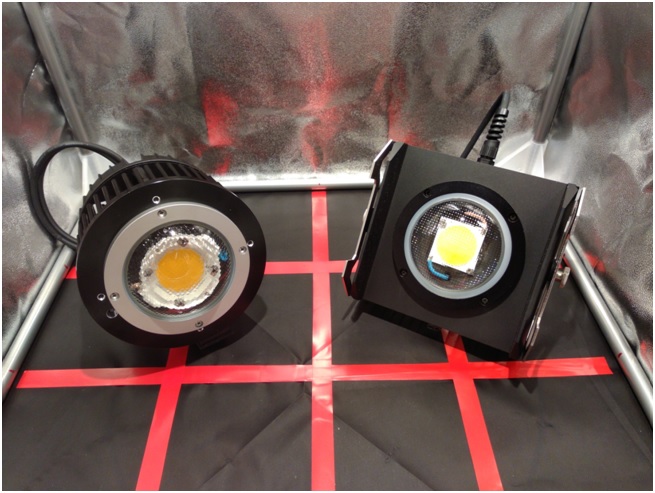
Rubol Josephine 135W V2 Plug&Play €199,99 including VAT.*
Migro 100 €269,- inlcluding VAT.
* Rubol AG lens 60°/90°/120° sold separately for €19,99 including VAT
To make sure the test was done as honoustly as possible we did the following things. First we had to mount our Rubol AG lens of 90° made from borosilicate glass to our Rubol Josephine 135W V2. Before we started making the PAR intensity map we also had to make sure both growlights pulled the same amount of power from the wall. We let both growlights run for an hour to let the powerconsumption and temperature of the C.O.B.’s and heatsinks stabilize.

Both fixtures consumed the same 112W from the wall.

When this was done we let both lights run for yet another hour to make sure everything was up to normal working temperatures. The ambient temperature was maintained at a steady 25°C during both tests. The growlights were both hung at a height of 35cm.

We made sure both growlights were properly centered in the tent before conducting the test. The growtent used in this test is the Secret Jardin Hydro Shoot 60 which has a surface area of 60cm x 60cm. We devided the area in a 4×4 grid, the measurements were done in the order shown in the picture below.

Now let’s go a have a look at the measurements that were taken with our Asensetek Lighting Passport Standard High Intensity spectroradiometer.
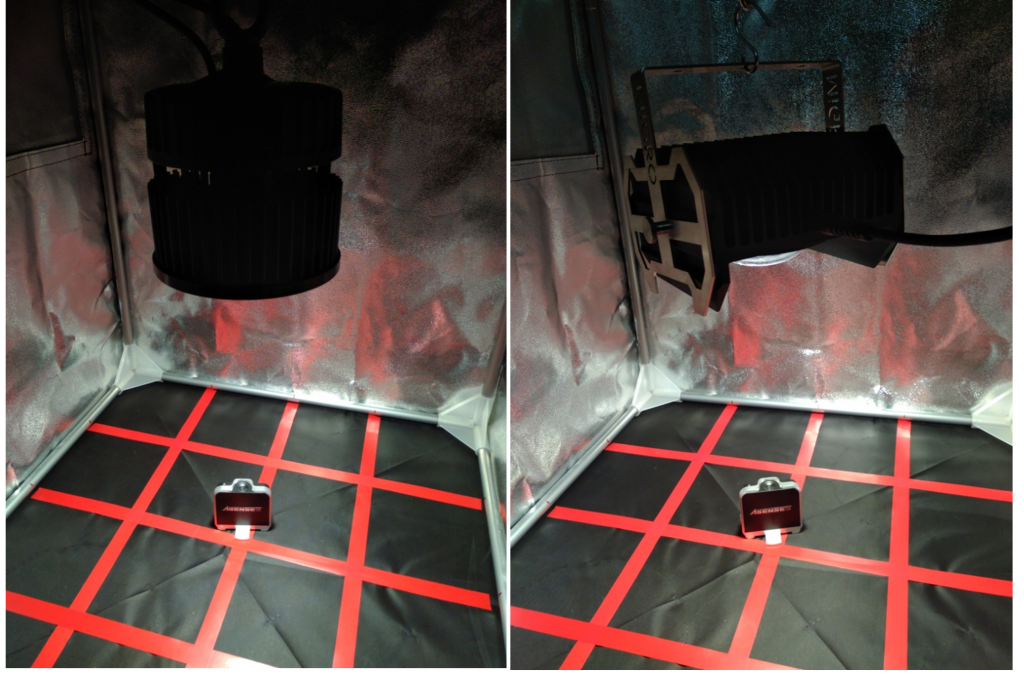
For both growlights we did a spot measurement to check the output and the spectrums.
The relative spectrum with normalisation on.

The relative spectrum with normalisation off.

The PPFD spectrum with normalisation off.

The weighted PPFD spectrum with normalisation off.

Overview of the resulst from the spot measurement.

Below the PAR intensity maps can be seen of the Rubol growlight measured with the Asensetek Lighting Passport.
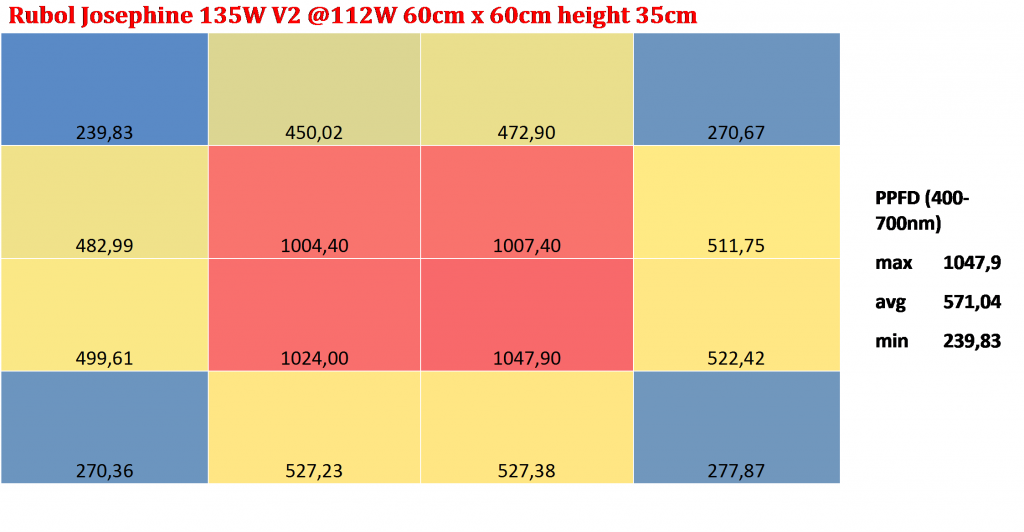
Overview of the measurements.

Below the PAR intensity maps can be seen of the Migro growlight measured with the Asensetek Lighting Passport.
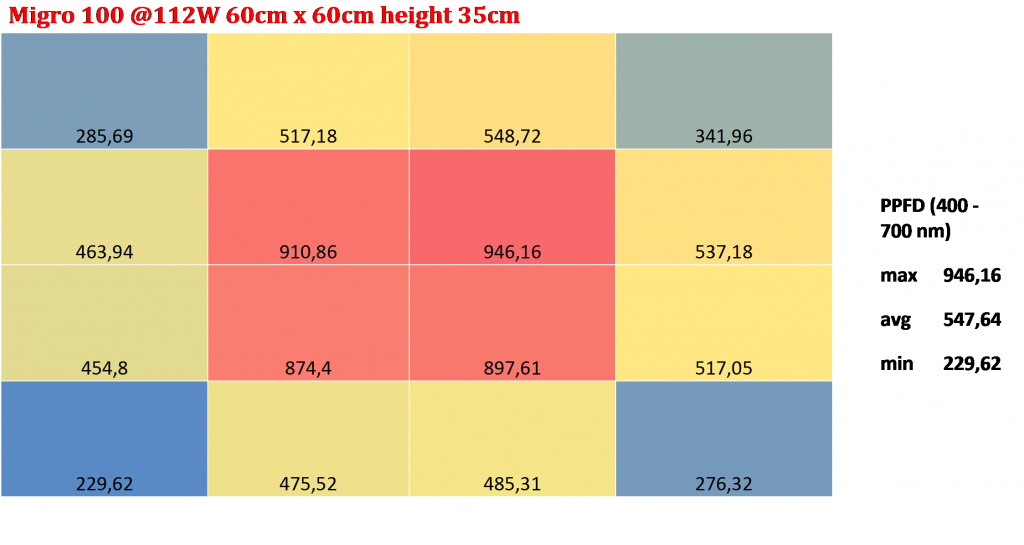
Overview of the measurements.

Below the PAR intensity maps can be seen of the Rubol growlight measured with the Apogee MQ-500.
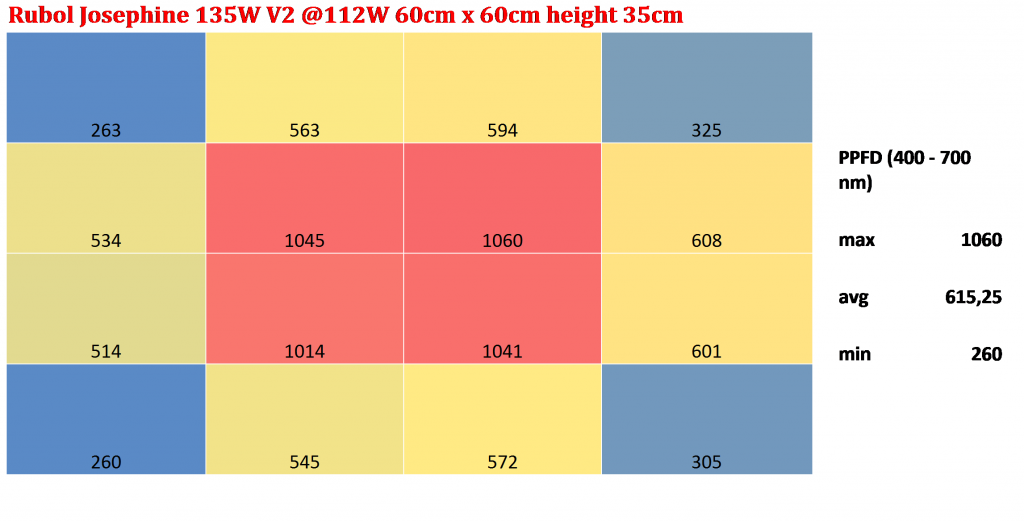
Below the PAR intensity maps can be seen of the Migro growlight measured with the Apogee MQ-500.
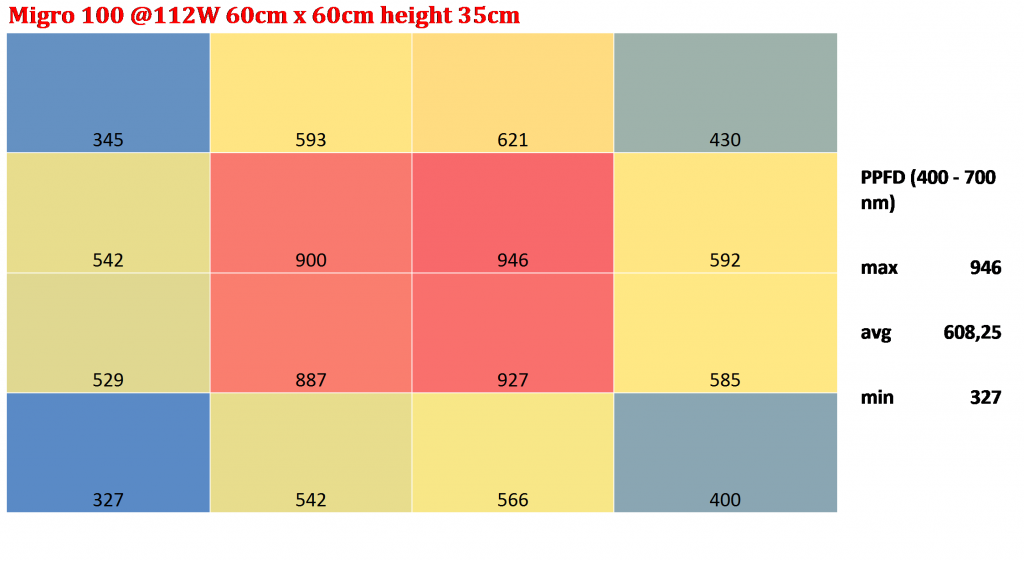
After the test was done we took the lens of the Migro 100 growlight.
As we had seen through the lens Migro does not use a LED holder but has chosen to use the mounting holes of the C.O.B.

At Rubol we always use LED holders because only then the pressure is devided evenly on to the C.O.B.. The corners normally tend to lift up when using the mouting holes of the C.O.B this is the reason why we always advice to use LED holders. As we feared the corners of the Luminus CXM 32 were indeed lifting up quite a bit.


We noticed some thermal paste was leaking out under the C.O.B. which did not quite spread all the way out to the corners which had lifted up.


This will cause the C.O.B. of the Migro 100 to run hotter which decreases the efficiency and lifespan of the growlight. We also found a couple of small imperfections which had been left over from the prodcution process.
We did not expect this from a growlight in this price range.




We also noticed that some of the light produced by the Migro 100 was lost on the sides of the bottom fins of the heatsink.

We also found a picture with FLIR camera from Migro on their Instagram. The difference with our measurement was very large to say the least. Airflow must have been provided to the heatsink as can be seen on the left picture.
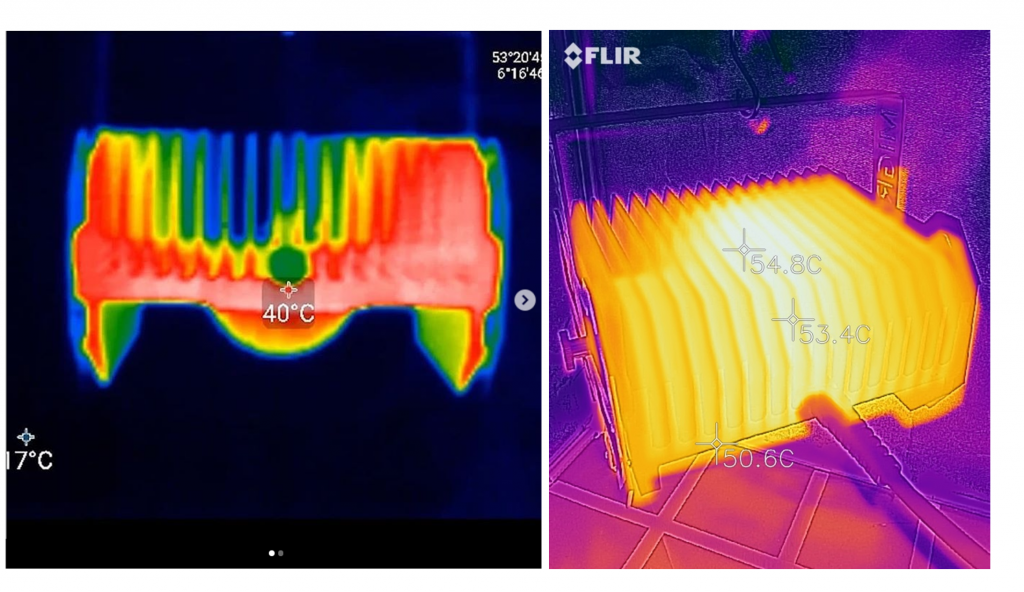
With the new Luminus CXM 32 gen.4 C.O.B. Migro has improved their perfomance by 5,31% up to 16,97% according to our tests. This fits the claim of Migro about the extra 5% performance with the new gen.4 C.O.B based on our measurement with the Asensetek.
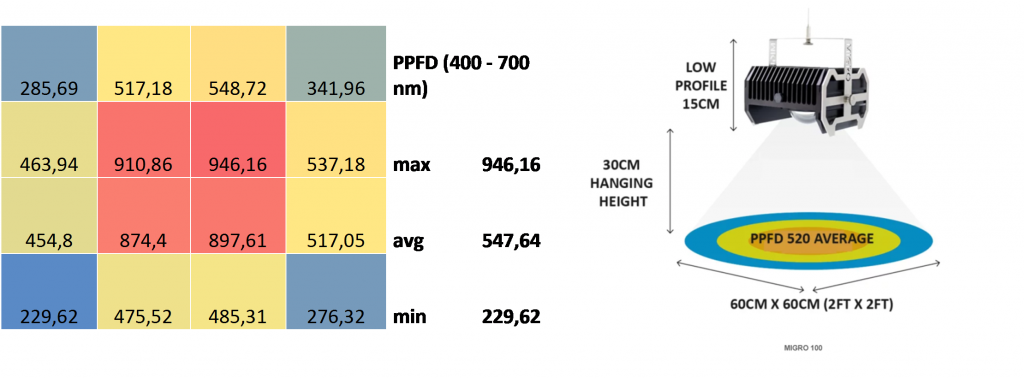
We were not able to reproduce the new PAR intensity map that was published in the manual of the Migro 100, with the Asensetek it scored lower and with the Apogee it scored considerabily higher.

Conclusion
It was an honour to have fought in the ring with Migro. The Rubol Josephine 135W V2 and Migro 100 were very evenly matched and both growlights performed very well during the test as we anticipated. The way Migro chose to mount the C.O.B. and the small imperfections on the heatsink holder were the only things we did not like about the Migro 100. The heatsink of the Migro 100 even ran a bit cooler than of the Rubol Josephine 135W V2. In the end the Rubol Josephine 135W V2 produced 1,15% more light based on the Apogee and 4,27% more light based on the Asensetek than the Migro 100.
Taking in consideration the price and performance of both units The Rubol Josephine 135W V2 equipped with the Rubol AG lens 90° was the clear winner of this test.
